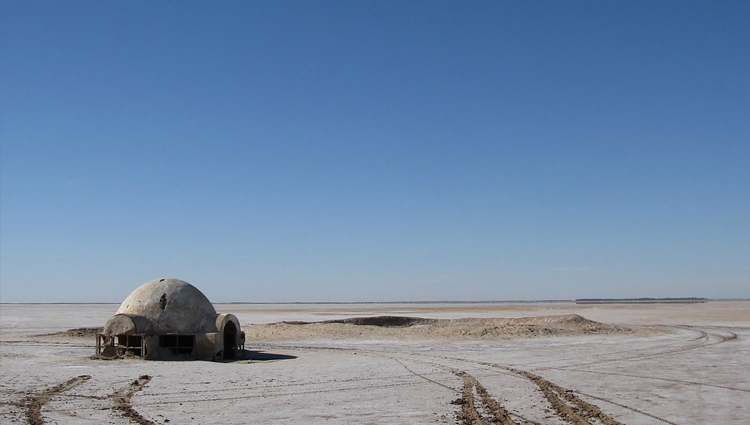Mars On Earth
Astrobiologists look for places here at home to practice for missions on other planets
Image

Media credits
WASHINGTON (ISNS) -- Like the Earth, the other planets and moons in our solar system have their own characteristic local surface materials and weather conditions. Scientists wanting to get the most of space-probe visits to these remote places are developing a better understanding of their local parameters and are building appropriate detectors by visiting places on Earth similar to these astronomical bodies.
Last week a team of planetary scientists journeyed to Chott el Jerid, a dry lake in Tunisia. The salt plain there is thought to be one of the nearest approximations to Mars’s high-latitude surface anywhere on Earth. The dry lake is even red just like Mars, owing to iron atoms in the soil.
The scientists, led by Felipe Gomez of the Center for Astrobiology in Madrid, are looking at the sub-surface water, minerals on the surface, and biological samples from the lake, all with the aim of understanding the search for life in locations on Mars with analogous conditions.
Out on the dry lake the temperatures are typically 95 F or more, and internet reception is poor. Nevertheless, Dr. Gomez reported on May 27 that things were going well on the scientific front but not the human front: "Some bad news is that three persons from the team got ill yesterday due to something related to the food or the high temperature. They are feeling better today but we spent some time in Tozeur (a nearby town) looking for a pharmacy. Things are going well otherwise: with the drill we have discovered that there is a second ecosystem underneath the surface. Probably no oxygen and methanogenesis."
This research is sponsored by Europlanet Research Infrastructure, a venture underwritten by the European Union. Other analogous sites scheduled for scrutiny are the Popigai meteorite crater in Siberia and Rio Tinto in Spain, which are thought to mimic other parts of Mars. Another site, the Svalbard archipelago in the Arctic Ocean, is supposed to resemble Jupiter’s moon Europa, while the Kamchatka Peninsula should be a worthy stand-in for Saturn’s moon Titan.

